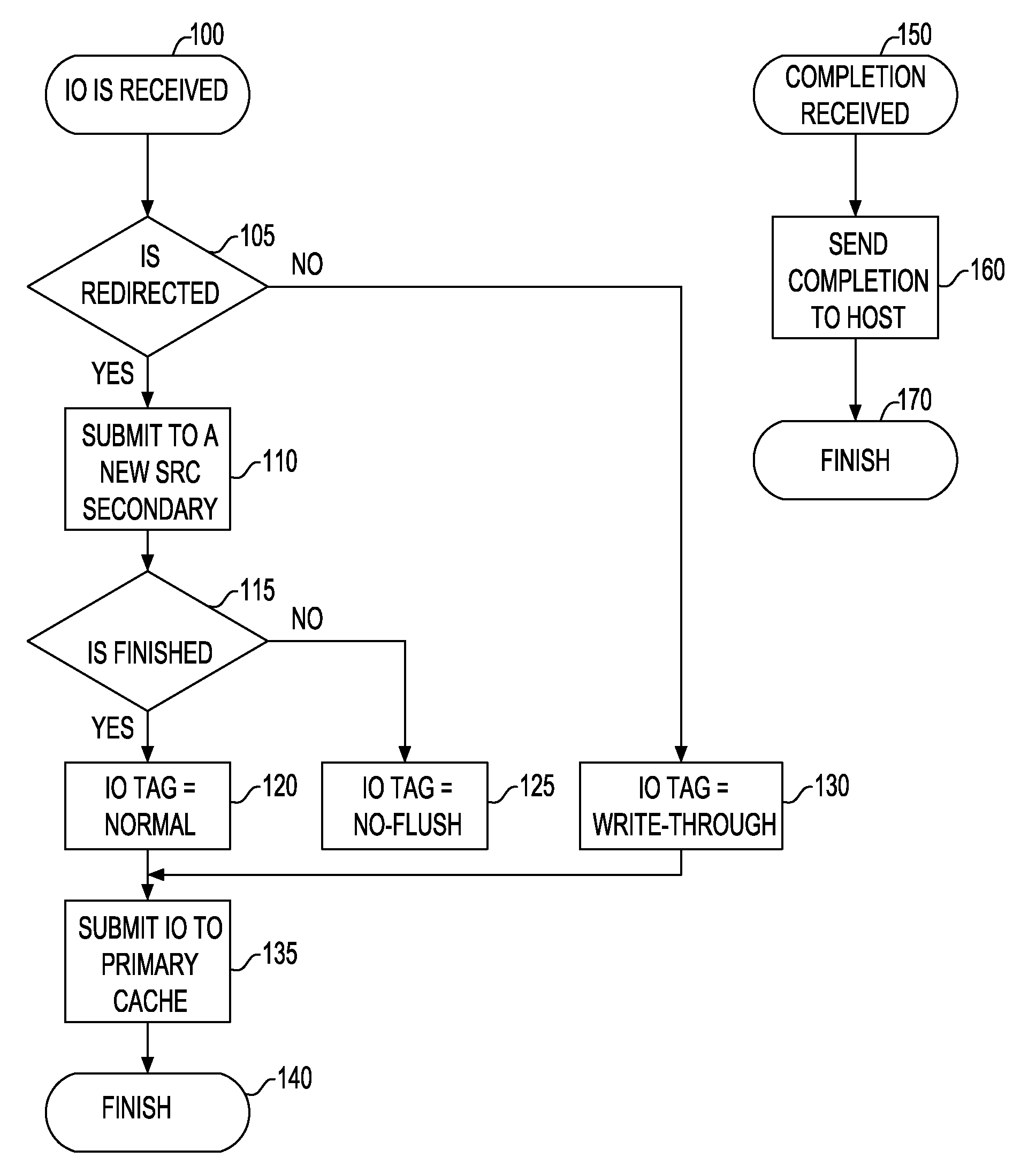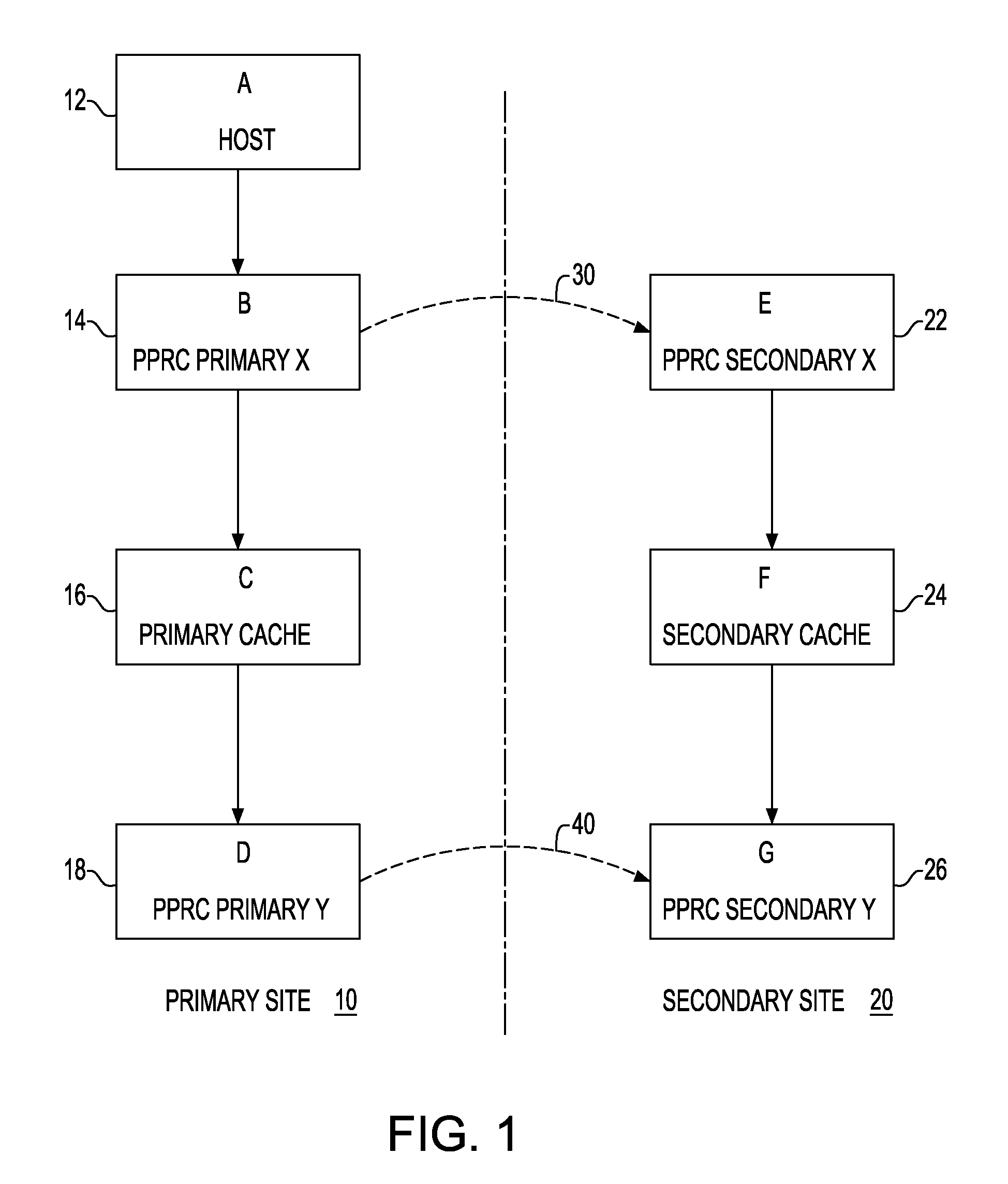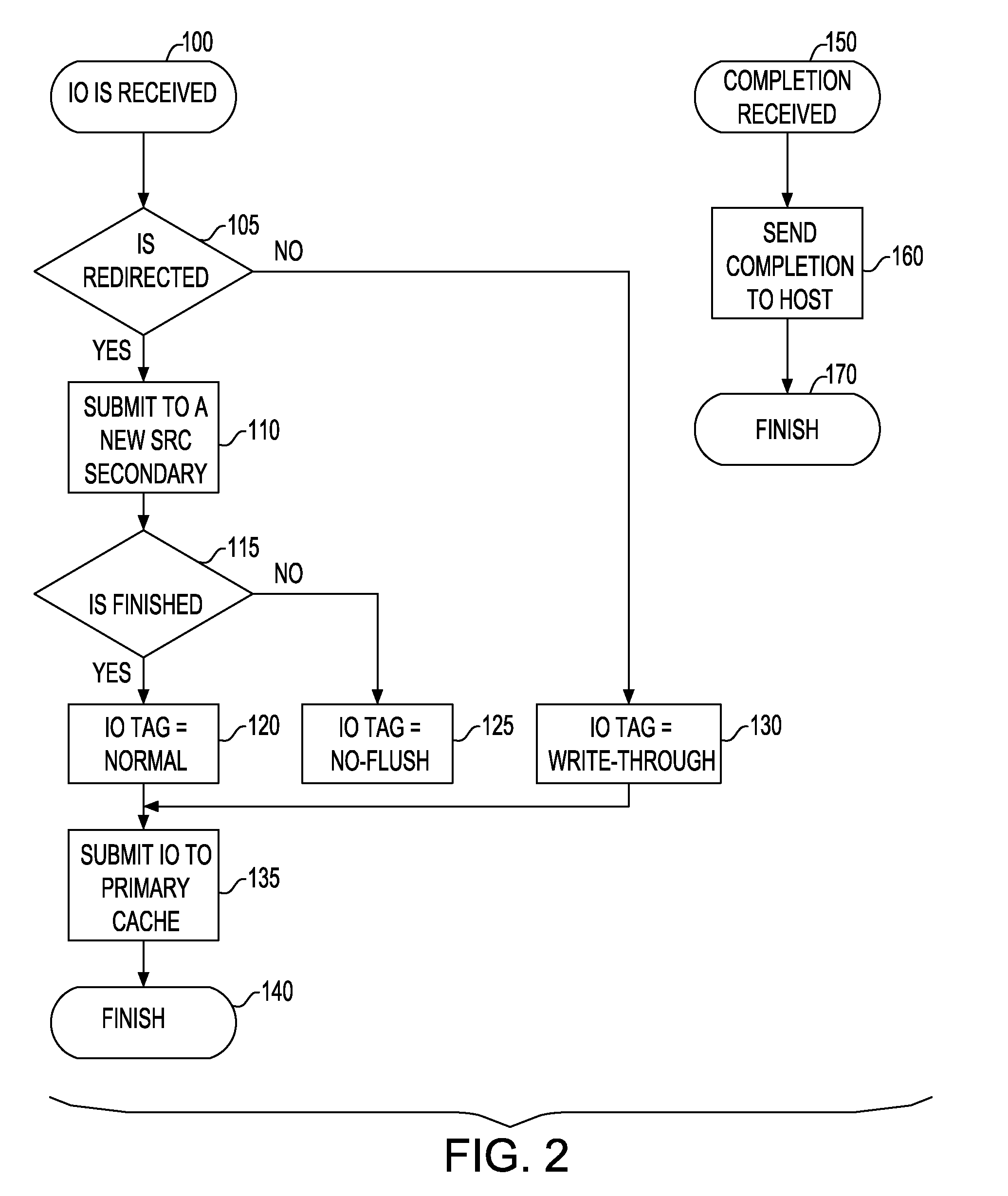Method for migration of synchronous remote copy service to a virtualization appliance
a virtualization appliance and remote copy technology, applied in the direction of memory adressing/allocation/relocation, instruments, error detection/correction, etc., can solve the problems of secondary storage devices losing data consistency, inability to perform this migration without interruption on a host device, and inability to us
- Summary
- Abstract
- Description
- Claims
- Application Information
AI Technical Summary
Benefits of technology
Problems solved by technology
Method used
Image
Examples
Embodiment Construction
[0035]FIG. 1 illustrates a block diagram of one embodiment of a system employing the present invention. Especially, FIG. 1 depicts an environment where a migration of SRC (Synchronous Peer to Peer Remote Copy) from a backend storage subsystem (e.g., IBM® DS8000, IBM® DS4000, EMC® Symmetrix®, EMC® CLARiion®, etc.) to a storage virtualization appliance (e.g., IBM® San Volume Controller) occurs. The Peer to Peer Remote Copy (PPRC) is a protocol to mirror data stored at a primary storage device (e.g., PPRC Primary Y 18) at a primary site 10 to data stored at a secondary storage device (e.g., PPRC Secondary Y 26) at a secondary site 20. Under Synchronous PPRC (SRC), each write to the primary storage device (e.g., PPRC Primary Y 18) is also performed to the secondary storage device (e.g., PPRC Secondary Y 26). In one embodiment, a mirrored write to a secondary storage device (e.g., PPRC Secondary Y 26) is performed by a primary storage device (e.g., PPRC Primary Y 18) via a physical link ...
PUM
 Login to View More
Login to View More Abstract
Description
Claims
Application Information
 Login to View More
Login to View More - R&D
- Intellectual Property
- Life Sciences
- Materials
- Tech Scout
- Unparalleled Data Quality
- Higher Quality Content
- 60% Fewer Hallucinations
Browse by: Latest US Patents, China's latest patents, Technical Efficacy Thesaurus, Application Domain, Technology Topic, Popular Technical Reports.
© 2025 PatSnap. All rights reserved.Legal|Privacy policy|Modern Slavery Act Transparency Statement|Sitemap|About US| Contact US: help@patsnap.com



